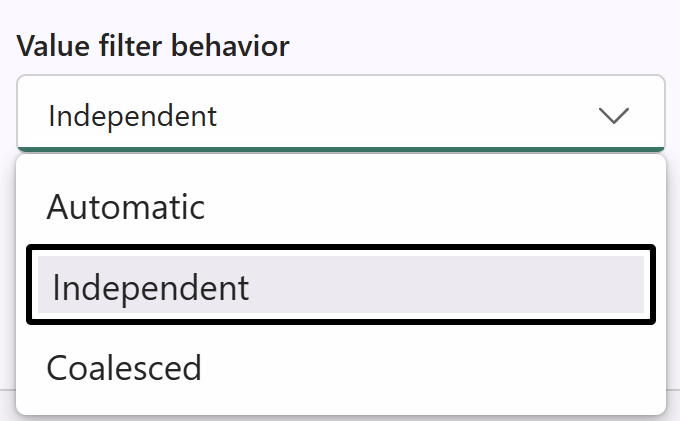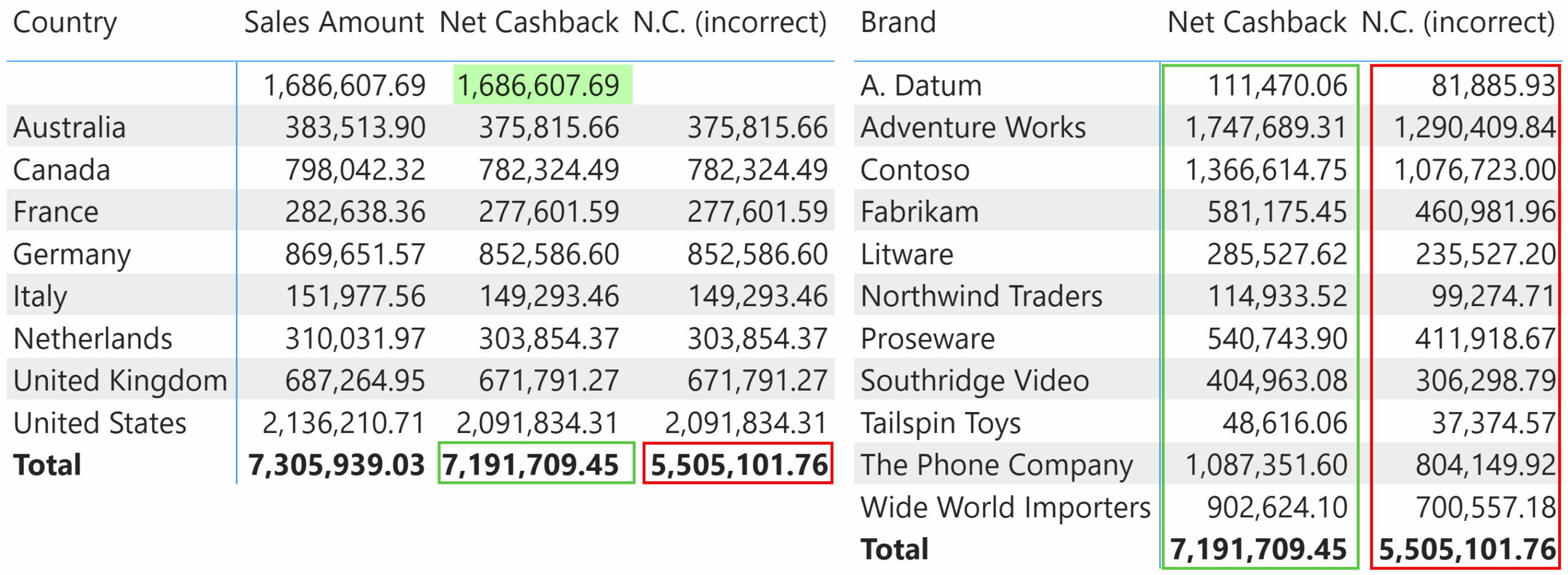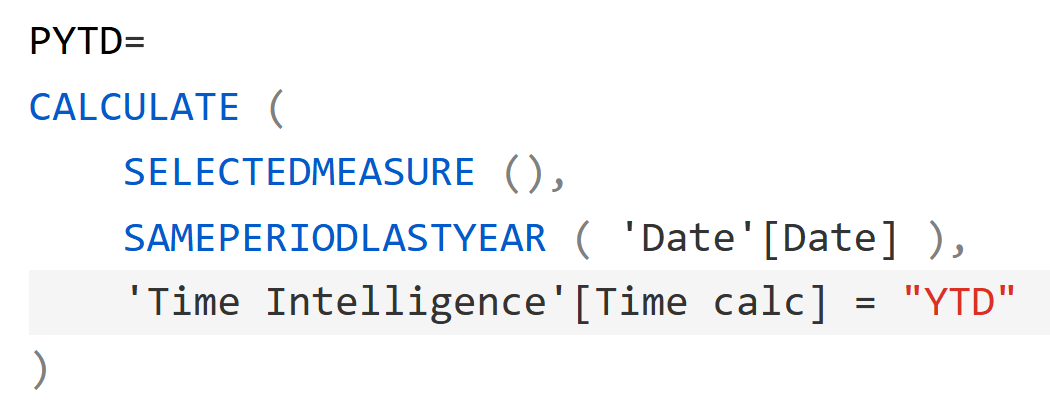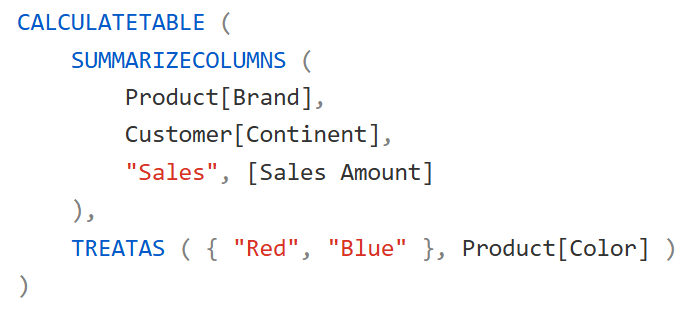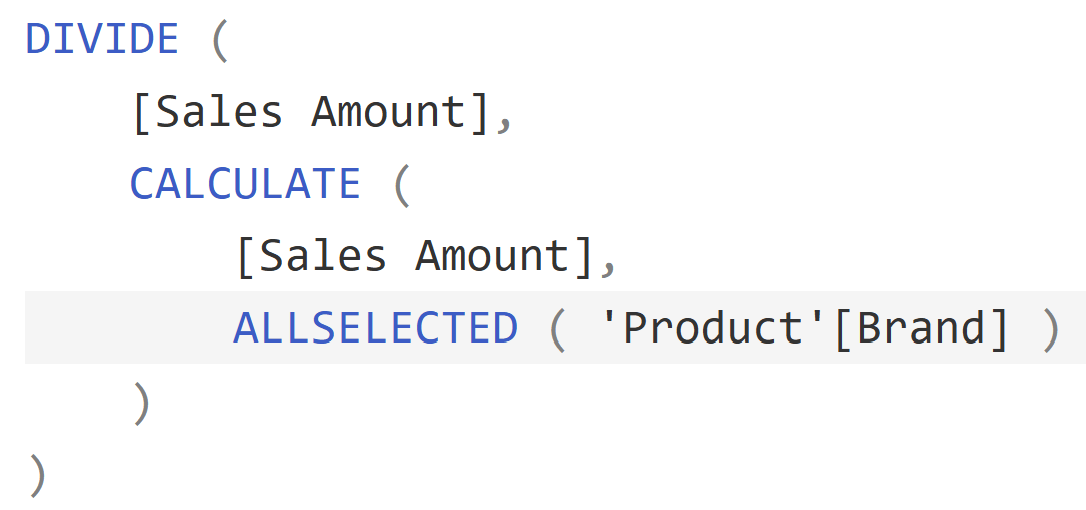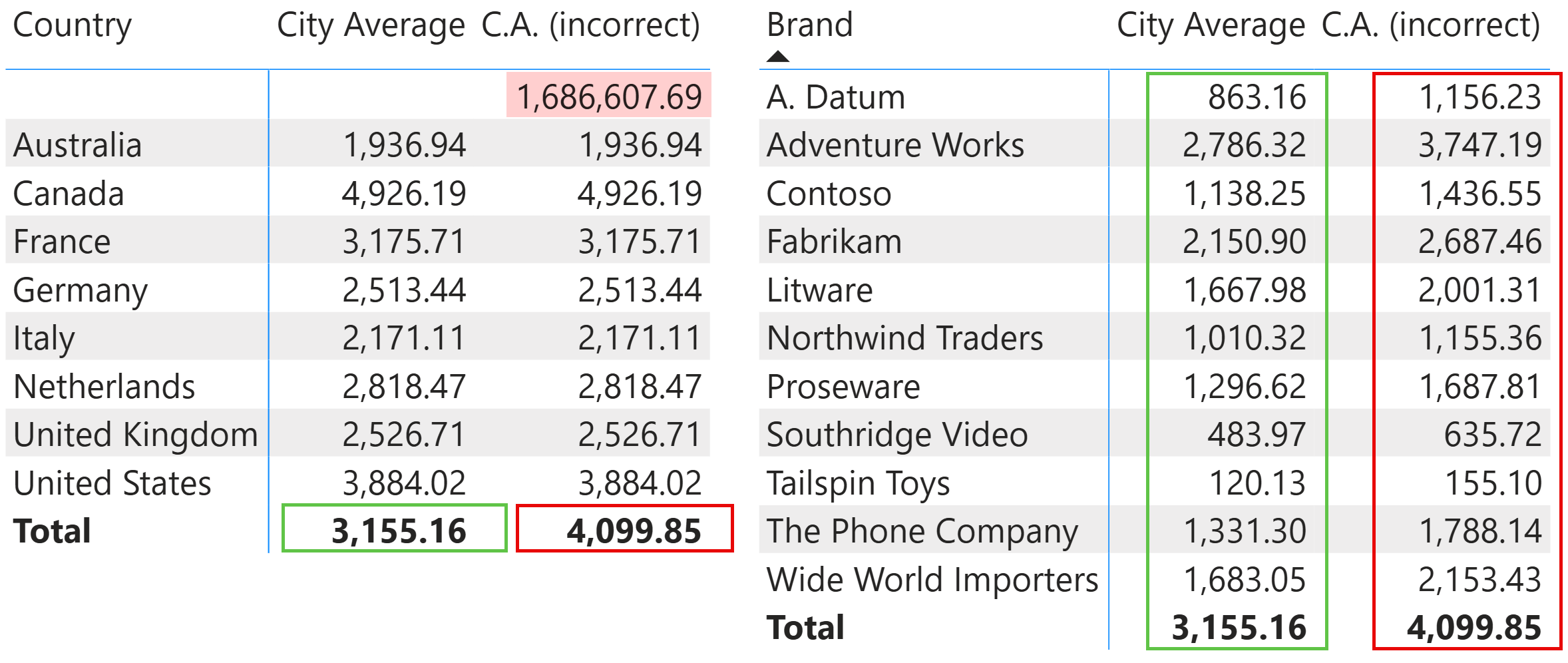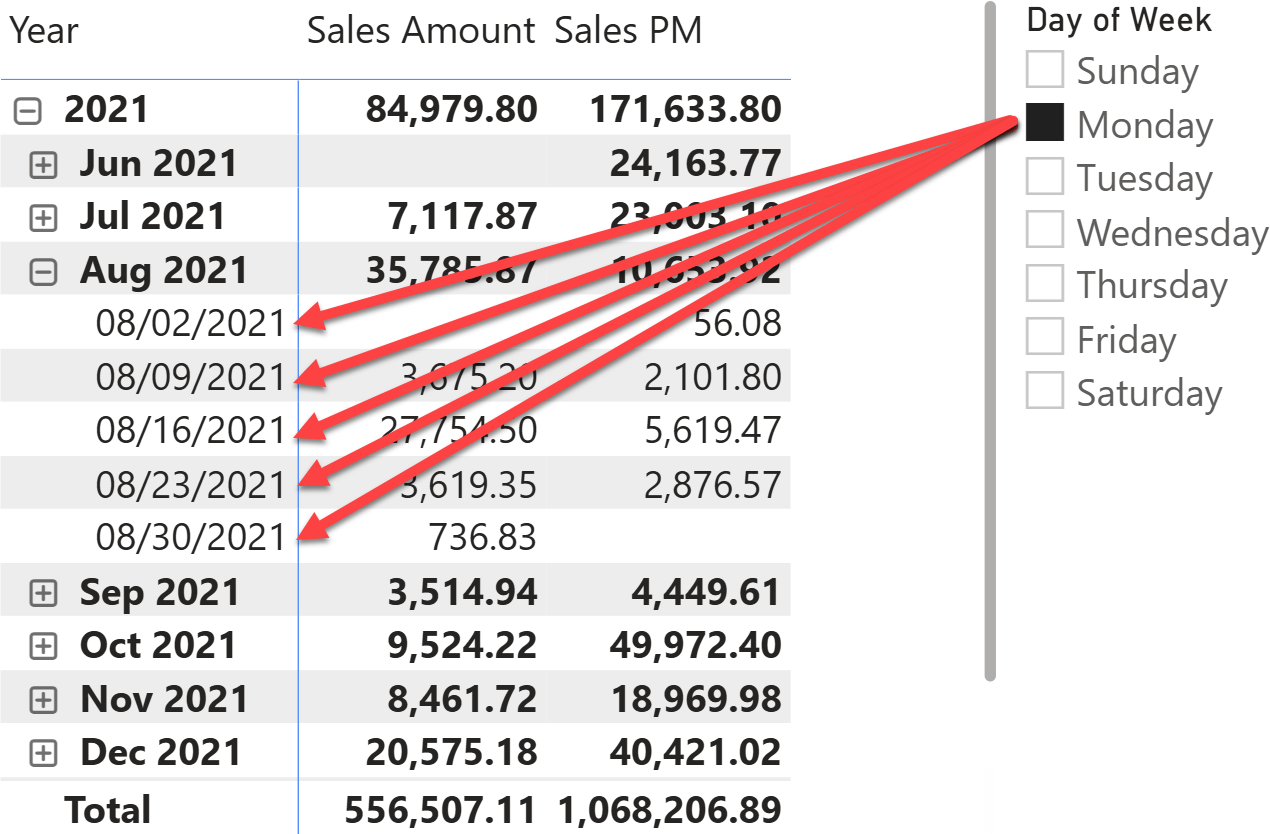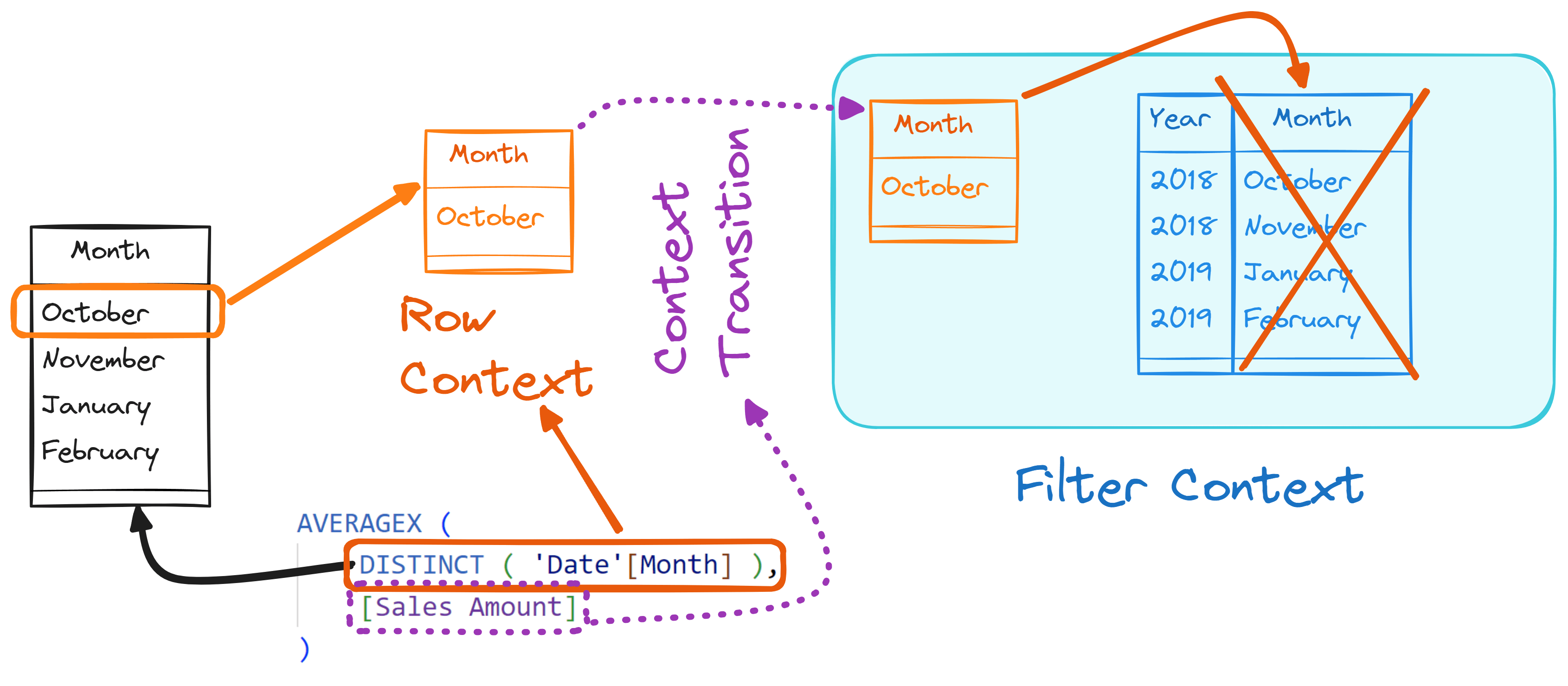-
This article describes when to use VALUES in a table grouped by SUMMARIZE, then goes on to explain why you cannot however use VALUES with SUMMARIZECOLUMNS. Read more
-
Value filter behavior is a setting in Power BI semantic models that controls how filters are combined in SUMMARIZECOLUMNS. This article explains how it works and suggests its best configuration. Read more
-
User-defined functions are a new and exciting feature in DAX. In this article, we outline the key concepts to understand before using them in Power BI projects. Read more
-
Why and when you should use VALUES while iterating a table reference in DAX. Read more
-
This article describes the sideways recursion triggered by invoking a calculation item from another calculation item, explaining why it should be avoided to steer clear of unexpected results. Read more
-
SUMMARIZECOLUMNS is a powerful and complex function in DAX that in 2025 can be used in measures. This article outlines the best practices when using this function to avoid incorrect results. Read more
-
ALLSELECTED is a powerful, yet dangerous function. This article describes the best practices to follow to avoid falling into the pitfalls involved with ALLSELECTED. Read more
-
When should you use DISTINCT over VALUES in DAX? Here is how to write resilient measures that survive bad data and model changes. Read more
-
When using time intelligence functions, the automatic REMOVEFILTERS on Date can make maintaining filters on the Date table challenging. This article shows a technique to handle filter-preserving columns in DAX. Read more
-
This article describes the DAX context transition using a conceptual model based on a visual representation. Read more

